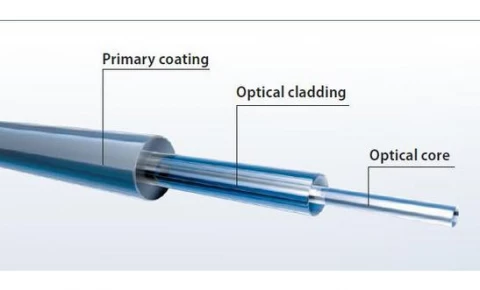Description
Leoni Radiation-Hard Multimode Fibers are meticulously engineered to excel in the most challenging environments, particularly those exposed to radiation. These specialized fibers are a cornerstone in industries such as aerospace, where they are required to perform reliably under conditions that would compromise standard fiber optics. Developed to meet the rigorous demands of radiation-threatened areas, these fibers ensure consistent performance and durability.
Each fiber is crafted in compliance with the stringent MIL-Spec standards, ensuring that they are tested and approved by the U.S. Defense Supply Center, Columbia (DSCC) under the MIL-PRF 49291 specification. This certification guarantees that the fibers not only meet but exceed the quality benchmarks set by international standards such as ITU G.651, G.652, and IEC 60793-2-10, IEC 60793-2-50. Such adherence to high-quality standards ensures that these fibers maintain optimal performance even in the most demanding conditions.
Quality assurance is a cornerstone of Leoni's production process. Every fiber undergoes a comprehensive 100% quality test as per the IEC 60793 standards. Furthermore, their resistance to radiation is meticulously evaluated according to the TIA/EIA 455-64 procedure, which measures radiation-induced attenuation in optical fibers. This rigorous testing ensures that the fibers maintain their integrity and performance, even when subjected to high levels of radiation.
Radiation-Hard Multimode Fibers - 50-125-500
Specifications
| Core Diameter: | 50 um |
|---|---|
| Wavelength Range: | 850 – 1300 nm |
| Cable Length: | 1100 m |
| Fiber Core Material: | Not Specified |
| Coating Diameter: | 500 um |
| Cladding Diameter: | 125 um |
Features
- Radiation-Hard Design: Specially developed for applications in radiation-threatened areas, such as aerospace industries, ensuring durability under demanding environmental conditions.
- MIL-Spec Approval: Tested and approved by the U.S. Defense Supply Center, Columbia (DSCC) according to MIL-PRF 49291 standards.
- Quality Standards: Meets and exceeds ITU G.651 and G.652, as well as IEC 60793-2-10 and IEC 60793-2-50 standards for optical fiber specifications.
- Comprehensive Testing: Every fiber undergoes a 100% quality test in accordance with IEC 60793 standards and radiation resistance testing per TIA/EIA 455-64.
- Core Specifications: Available in multimode fibers with core diameters of 50/125 μm and 62.5/125 μm, ensuring high performance.
- Optical Performance: Attenuation at 850 nm/1300 nm is 3.5/1.0 dB/km, with uniform attenuation at 1310 nm ≤ 0.2 dB.
- Bandwidth Capability: Offers OFL bandwidth of 500/500 MHz×km for 50/125 μm fibers and 300/600 MHz×km for 62.5/125 μm fibers.
- Temperature Resilience: Coating acrylate withstands temperatures from –55 °C to +85 °C, suitable for various environments.
- Mechanical Strength: Proof test ≥ 690 MPa and dynamic tensile strength ≥ 3.2 GPa (unaged), ensuring robustness.
- Storage and Operating Temperatures: Operating temperature range of –55 °C to +85 °C and storage temperature range of –62 °C to +85 °C.
- Lightweight Design: Fiber weight ≤ 0.25 kg/km, facilitating ease of installation and handling.
Applications
- Aerospace Industries: Designed to withstand hazards in radiation-threatened areas or under demanding environmental conditions.
- Military Applications: Approved by the U.S. Defense Supply Center, Columbia (DSCC) according to MIL-PRF 49291.
- Telecommunications: Meets and exceeds ITU G.651 and G.652 standards for high-quality optical fiber performance.
- Research and Development: Suitable for environments where high radiation resistance is required.
- Industrial Applications: Ideal for use in environments with extreme temperature variations and mechanical stress.
- Medical Equipment: Can be used in devices exposed to radiation during operation.
- Defense Systems: Ensures reliable performance in military communication systems under harsh conditions.
Frequently Asked Questions
What tests are performed on these fibers to ensure their quality?
What are radiation-hard multimode fibers?
What are the different types of radiation-resistant multimode fibers available?
What are the quality standards that these fibers meet and exceed?
What is the temperature range for the coating on these fibers?
Similar Products

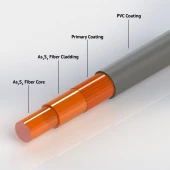
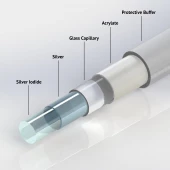
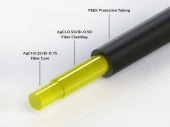

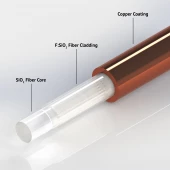



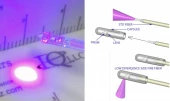


Your inquiry has been received.
Create an account by adding a password
Why create an account?
- Auto-complete inquiry forms
- View and manage all your past messages
- Save products to your favorites
- Close your account anytime — no hassle
